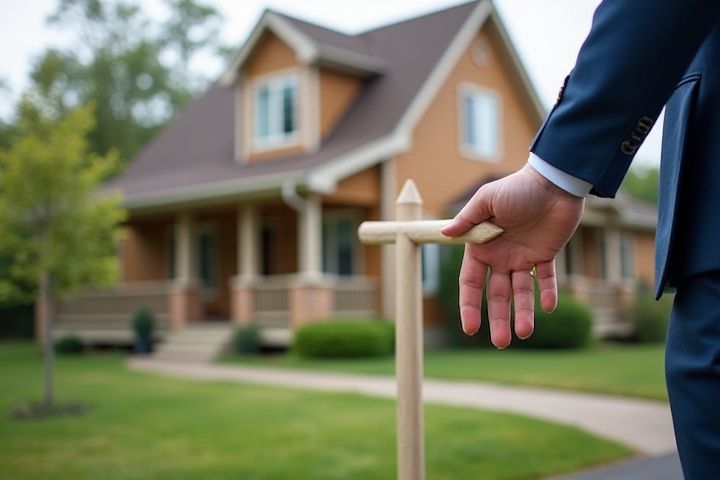
House flipping can be a profitable venture when approached with careful planning and market awareness. Key factors influencing profitability include purchasing undervalued properties, performing cost-effective renovations, and targeting desirable neighborhoods for resale. Understanding local real estate trends enables you to estimate potential profit margins accurately and set realistic timelines for your projects. Financing options such as hard money loans or partnerships can enhance cash flow, allowing for quicker transactions. By conducting thorough market research and leveraging professional networks, you can significantly increase your chances of success in the house flipping industry.
Can House Flipping Be Profitable
Market Timing
House flipping can be highly profitable when market timing is strategically executed. By analyzing real estate trends, you can identify peak buying seasons where demand surges, typically during spring and summer months. The margin for profit often increases when purchasing properties in a seller's market, where prices are inflated, and renovating efficiently can elevate home value significantly. In 2023, data indicates that homes flipped for a median profit of $68,000, emphasizing the importance of capitalizing on the right time to enter the market.
Location Selection
Location selection is critical for profitable house flipping, impacting both resale value and demand. Properties in neighborhoods with a median home price of at least $250,000 typically offer higher returns, reflecting market stability. Areas undergoing revitalization or within proximity to amenities such as schools, parks, and public transport can enhance attractiveness, often yielding a 10% to 20% profit margin. Conducting thorough research to identify trending markets can result in significant financial gains when flipping houses.
Renovation Costs
Renovation costs play a crucial role in the profitability of house flipping, significantly impacting your return on investment (ROI). On average, successful flippers allocate between 10% to 20% of the property's purchase price for renovations, ensuring that upgrades increase both aesthetic appeal and market value. Projects such as kitchen remodels can yield up to a 70% return, while bathroom updates often return about 65%. Understanding local market trends and labor costs will help you strategize with accurate budget forecasts and enhance profitability in your flipping venture.
Budget Management
Effective budget management is crucial for successful house flipping, as it directly impacts profitability. Allocate around 10-15% of your total budget for unexpected expenses, as unexpected repairs can arise during renovations. You should aim for a purchase price that allows for a renovation budget typically ranging from 20-30% of the property's after-repair value (ARV). By meticulously tracking all expenditures and adhering to your budget, you can enhance your profit margins significantly, often achieving gains of 20-30% on your investment.
Financing Options
House flipping can be highly profitable when utilizing the right financing options tailored to your investment strategy. Hard money loans, for instance, offer quick access to capital, typically covering around 70-80% of the property's after-repair value (ARV), allowing you to secure and renovate properties efficiently. You can also consider using a cash-out refinance on an existing property to fund new flips, leveraging your current equity without needing to apply for a traditional loan. With interest rates currently hovering around 6-7%, understanding your financing options is crucial to maximize profits while minimizing risks in the house flipping business.
Property Valuation
Property valuation is a critical factor in the profitability of house flipping, as it directly influences your buying and selling price. Accurate assessments can prevent overpaying for properties, typically relying on comparative market analysis, which evaluates recent sales of similar homes in the area. An investment in renovations, ideally yielding a return of 70-90% on costs, further enhances property value and attracts buyers. Understanding local market trends, such as average days on market and price per square foot, can refine your flipping strategy, positioning you for higher profit margins.
Marketing Strategy
House flipping can be highly profitable when supported by an effective marketing strategy that targets the right audience. For instance, utilizing social media platforms can increase visibility, attracting potential buyers or investors, with approximately 70% of millennials actively searching for homes online. Implementing local SEO techniques can enhance your online presence, ensuring your listings rank higher in search results, which is crucial as 63% of homebuyers use the internet to find their homes. Your marketing should also leverage professional photography, compelling property descriptions, and virtual tours to showcase the potential of each flipped property, making it more appealing to prospective buyers.
Risk Assessment
House flipping can indeed be profitable, but it requires a thorough risk assessment to maximize returns. You should consider factors such as market volatility, renovation costs, and holding expenses, which can significantly impact your profit margin. According to the 2023 House Flipping Report, investors can expect an average return of approximately 40% on their investment, but risk factors like unexpected repairs or a declining market can easily erode these gains. A strategic approach entails careful analysis of the neighborhood trends and a detailed budget to mitigate potential losses.
Legal Considerations
House flipping can be profitable, but understanding legal considerations is crucial for success. You must navigate zoning laws, which dictate how properties can be used and modified, as well as obtain the necessary permits for renovations. Compliance with federal and state regulations, including disclosures related to lead paint or mold, is also essential to avoid significant fines. Additionally, consulting a real estate attorney can help ensure that contracts and agreements adhere to local laws, protecting your investment and potential profits.
Economic Trends
House flipping can be highly profitable, especially when aligned with current economic trends. In 2023, the national average return on investment (ROI) for flipped homes reached 40%, with some metropolitan areas even reporting returns exceeding 70%. With mortgage rates fluctuating around 6%, savvy investors can capitalize on lower purchase prices during economic downturns. Understanding local housing market dynamics and renovation costs is crucial, as the right upgrades can significantly enhance property value and attract buyers.
